The Tariff Challenge: Exploring Underwear Manufacturing Alternatives in Bangladesh
With the United States imposing 20% punitive tariffs on Chinese goods, many of our American clients are feeling the financial strain. As costs rise, margins shrink, and businesses struggle to maintain competitive pricing. Is moving production to Bangladesh the solution you've been looking for?
Bangladesh offers significant cost advantages for underwear manufacturing with labor costs of $0.7-1/hour versus China's $3-4/hour. When factoring in tariffs, Chinese underwear subject to Section 301 tariffs faces combined duties of approximately 43.1% (15.6% base + 27.5% punitive), while Bangladesh products typically incur only the 15.6% base rate..Despite longer lead times (45-60 days versus 30-45 days from China), the total landed cost savings typically range from 15-16%, making Bangladesh an increasingly attractive alternative.
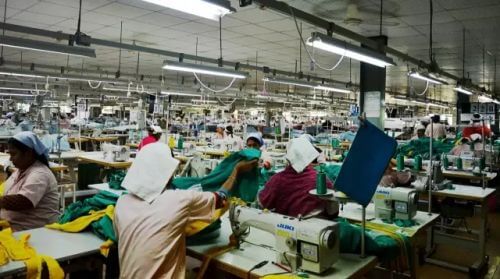
As the founder of HAVING, with manufacturing facilities in both China and Bangladesh, I'm uniquely positioned to provide an honest assessment of the opportunities and challenges in shifting production. Our company has gradually expanded our Bangladesh operations over the past five years, giving us valuable insights into managing this transition successfully. Let me walk you through what you need to know to make an informed decision.
What Manufacturing Capabilities Does Bangladesh Offer for Underwear Production?
Many brands hesitate to shift production from China due to concerns about Bangladesh's manufacturing capabilities. Without proper information, they risk missing substantial cost savings or, conversely, moving production prematurely to a facility that can't meet their quality standards.
Bangladesh excels at manufacturing basic cotton underwear, women's panties, men's boxers and briefs, and mid-range bras. Our facilities are equipped with modern cutting, sewing, and knitting machines capable of handling various fabrics including cotton, polyester, and spandex blends. While complex technical garments remain better suited to China, Bangladesh can successfully produce about 70% of standard underwear styles.
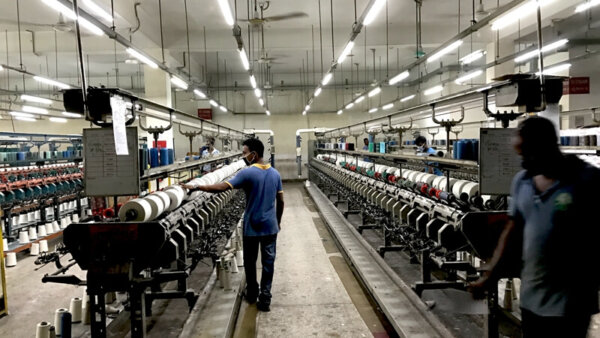
At our Bangladesh facility, we've gradually built production capacity to approximately 300,000 pieces monthly, representing about 60% of our Chinese facility's output. This scale allows us to accommodate both large retail orders and smaller specialty brand requirements. I've personally overseen this expansion, focusing on creating a facility that maintains the same standards as our Shantou operations.
What truly differentiates our approach is how we've structured the technical expertise transfer between facilities. Rather than building disconnected operations, we maintain an integrated production ecosystem. Our senior technical staff regularly rotates between China and Bangladesh, ensuring consistent knowledge transfer and standardized procedures. This approach has been instrumental in maintaining quality consistency across both production centers.
Bangladesh's textile industry has developed significantly over the past decade, with particular strength in knitting and basic cut-and-sew operations. The country has become the world's second-largest garment exporter after China, with textile exports reaching approximately $33 billion annually. This growth has been accompanied by substantial investments in machinery, training, and infrastructure specifically tailored to underwear production.
| Manufacturing Capability | Bangladesh | China | Recommendation |
|---|---|---|---|
| Basic Cotton Underwear | Excellent | Excellent | Ideal for Bangladesh production |
| Standard Bras (Non-technical) | Good | Excellent | Suitable for Bangladesh with proper QC |
| Technical Sports Bras | Fair | Excellent | Recommend China production |
| Shapewear | Fair | Excellent | Recommend China production |
| Men's Briefs/Boxers | Excellent | Excellent | Ideal for Bangladesh production |
| Women's Basic Panties | Excellent | Excellent | Ideal for Bangladesh production |
I've found that product complexity is the most reliable indicator for determining appropriate production location. Basic products with straightforward construction, fewer components, and standard materials are excellent candidates for Bangladesh manufacturing. By contrast, products requiring specialized machinery, complex construction techniques, or advanced materials still benefit from China's technical expertise and established supply chains.
For brands considering a transition, I typically recommend starting with your simplest, highest-volume products. This approach minimizes risk while allowing both you and our production team to establish workflow patterns and communication channels before tackling more complex items.
How Does Quality Control Compare Between Bangladesh and China?
Brands often worry that moving production to Bangladesh will result in quality deterioration. This concern stems from both genuine quality variation in the market and outdated perceptions about Bangladesh's manufacturing capabilities.
Our Bangladesh facility implements identical quality control measures to our Chinese operations, including raw material testing, in-line inspections throughout production, and comprehensive final quality checks. With defect rates averaging under 1% (compared to 0.8% in China), we maintain consistent standards across facilities through standardized processes, cross-facility training, and unified quality management software systems.
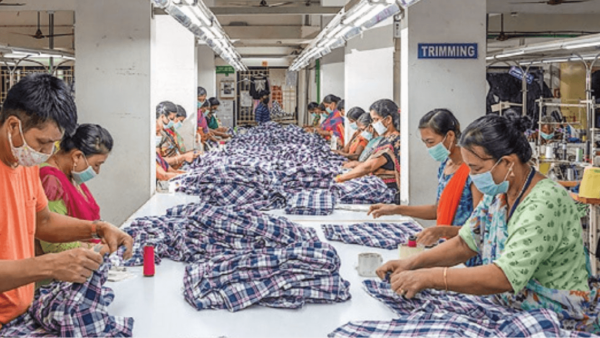
Quality control begins with our standardized operating procedures, which are identical across all facilities. When we established our Bangladesh operation, we transplanted the entire quality management system from China, including testing protocols, inspection checklists, and defect classification systems. This standardization ensures that quality evaluations follow the same criteria regardless of production location.
Our cross-facility training program represents one of our most effective quality assurance mechanisms. Senior quality control personnel from our Shantou headquarters regularly conduct extended training sessions in Bangladesh, while Bangladeshi QC staff complete rotation programs in China. This exchange program has proven invaluable for maintaining consistent quality standards and troubleshooting emerging issues before they affect production.
Technology plays a crucial role in our quality management approach. We've implemented a unified digital quality management system across all facilities that tracks real-time production quality metrics, identifies recurring issues, and centralizes all quality data. This system allows us to monitor defect trends, compare performance between facilities, and implement corrective actions quickly when issues arise.
| Quality Control Measure | Implementation in Bangladesh | Performance Metrics |
|---|---|---|
| Raw Material Inspection | 100% of incoming materials tested for composition, durability, and colorfastness | 99.2% acceptance rate (vs. 99.5% in China) |
| In-line Quality Checks | Checks at 5 critical production stages with standardized checklists | 1.2% average defect rate (vs. 0.9% in China) |
| Final Inspection | AQL 2.5 standard with extended sampling for new products | 0.8% average final defect rate (vs. 0.7% in China) |
| Quality Documentation | Digital tracking system with daily reports and trend analysis | 100% inspection record retention |
| Staff Training | Monthly training sessions + quarterly cross-facility exchange | 15 hours average monthly QC training per staff member |
For clients concerned about quality consistency, we offer several verification options. Many clients initially request sample runs from both facilities for side-by-side comparison. Others prefer to start with a small trial order from Bangladesh before committing to larger production. We also welcome facility visits and third-party inspections, which can provide additional reassurance during the transition process.
While Bangladesh's quality systems are now comparable to China's for standard products, there is one notable difference in the production environment. Bangladesh excels with stable, long-run production of consistent products, while China maintains an advantage in rapidly adapting to design changes and troubleshooting complex technical issues. This distinction informs our recommendation to begin Bangladesh production with your most standardized products.
What Are The Real Cost Differences Including Tariffs?
Many brands receive misleading information about potential savings when moving production to Bangladesh. Some suppliers present only labor cost differences without accounting for productivity variations, shipping costs, or import duties, leading to unrealistic expectations.
The total landed cost advantage for Bangladesh production typically ranges from 30-40% compared to China when accounting for all factors. While Bangladesh's base production costs are approximately 20% lower than China's, the major advantage comes from avoiding the 25% Section 301 tariffs imposed on Chinese goods. This tariff difference alone represents a 25% direct cost reduction before considering any production savings.

To provide a transparent cost comparison, I'll break down the actual expense components using a representative women's nylon panty 5-pack as an example. This analysis reflects current market conditions as of March 2025:
| Cost Component | China (USD) | Bangladesh (USD) | Difference |
|---|---|---|---|
| Raw Materials | $2.00 | $2.3 | 15% |
| Labor | $1.00 | $1.00 | 0% |
| Overhead & Other | $2.00 | $2.00 | 0% |
| Total FOB Cost | $5.00 | $5.3 | +6% |
| Base Tariff (15.6%) | $0.78 | $0.8268 | +6% |
| Tariff (27.5%) | $1.375 | $0.00 | -100% |
| Total Landed Cost | $7.155 | $6.1268 | -14.37% |
As the breakdown illustrates, the most significant savings derive from two primary factors: lower labor costs and the absence of Section 301 tariffs. Raw material costs are slightly lower in Bangladesh due to local cotton availability, though specialty materials sometimes need to be imported at similar prices to China.
It's important to note that shipping costs from Bangladesh are typically 40-50% higher than from China, mainly due to less efficient logistics infrastructure and fewer direct shipping routes to major markets. Despite this, the overall landed cost advantage remains substantial.
When analyzing these figures, remember that different product types yield different savings potentials. Labor-intensive products with simple construction (like basic underwear) show the greatest cost advantages when shifting to Bangladesh, sometimes reaching 20% total savings. Products requiring specialized materials or complex construction techniques may show more modest savings in the 15-16% range.
One often overlooked factor is compliance costs. Bangladesh's garment industry faces intensive international scrutiny regarding worker safety and labor practices. While this has dramatically improved factory conditions, it has also increased compliance-related expenses. Our Bangladesh facility maintains all major certifications including ISO 9001, SA8000, WRAP and BSCI, with regular audits ensuring continued compliance with international standards.
What Are The Timeline Differences Between China and Bangladesh?
Brands often underestimate the timeline implications when transitioning production locations. Without proper planning, these differences can disrupt supply chains and inventory management systems.
Bangladesh production typically requires 45-60 days lead time compared to China's 30-45 days, primarily due to slightly longer production processing and extended shipping times. Initial development and sampling timelines show greater variance, with complex products taking 2-4 weeks longer in Bangladesh than China. Planning for these extended timelines is essential when transitioning production.
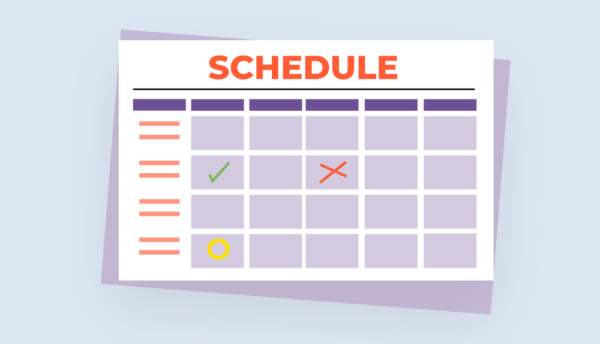
Through managing both operations, I've observed consistent patterns in timeline differences. Standard orders of basic underwear styles typically require about 15 additional days when produced in Bangladesh versus China. This difference stems from several factors:
First, production efficiency remains approximately 15-20% lower in our Bangladesh facility despite using similar equipment. This efficiency gap has steadily narrowed over the years but still accounts for about 5-7 days of additional production time for typical orders.
Second, shipping logistics add considerable time. While China benefits from numerous direct routes to major markets, Bangladesh shipments often require transshipment through larger hubs like Singapore or Colombo, adding 7-10 days to typical transit times. For US East Coast destinations, Bangladesh shipments average 28-32 days transit compared to 18-22 days from China.
The development cycle shows even greater variation between locations. For new product development, our Chinese operation maintains significant advantages in speed and technical capability:
| Product Development Stage | China Timeline | Bangladesh Timeline | Notes |
|---|---|---|---|
| Initial Sample Development | 1-2 weeks | 2-3 weeks | Simple styles only in Bangladesh |
| Technical Pattern Development | 1 week | 2 weeks | Complex patterns developed in China |
| Sample Revisions | 5-7 days | 10-14 days | Depends on complexity |
| Pre-Production Sample | 7 days | 10 days | Similar quality results |
| Bulk Production Start | 15-20 days | 20-25 days | After approval |
| Production Completion | 30-45 days | 45-60 days | Order size dependent |
For established clients transitioning existing products from China to Bangladesh, we've developed a streamlined process that maintains our Chinese R&D strengths while leveraging Bangladesh's production advantages. The technical specification packages developed by our Chinese team are transferred to Bangladesh along with production samples, significantly reducing development time. This hybrid approach has proven effective in minimizing the timeline disadvantages.
To manage these timeline differences, we recommend several strategies:
First, increase order lead times by 15-20 days during the transition period. This buffer accommodates both the learning curve as production transfers and the additional shipping time.
Second, consider maintaining fast-turn replenishment or emergency production in China while transitioning seasonal or core products to Bangladesh. This dual-sourcing approach provides flexibility while maintaining cost advantages for the majority of production.
Finally, establish longer-term planning horizons with more accurate forecasting. The extended lead times from Bangladesh require greater planning precision, but the substantial cost savings typically justify this additional planning requirement.
How Does The Order Transfer Process Work?
Brands often hesitate to shift production due to uncertainty about the transition process itself. Without clear procedures, they fear production disruptions, quality inconsistencies, or management complications during the change.
To transfer production from China to Bangladesh, we follow a structured six-step process: 1) Feasibility assessment of product suitability, 2) Technical package development and transfer, 3) Sample production and approval, 4) Pilot production run, 5) Quality evaluation and adjustment, and finally 6) Full-scale production implementation. This process typically takes 3-4 months for the first product category.
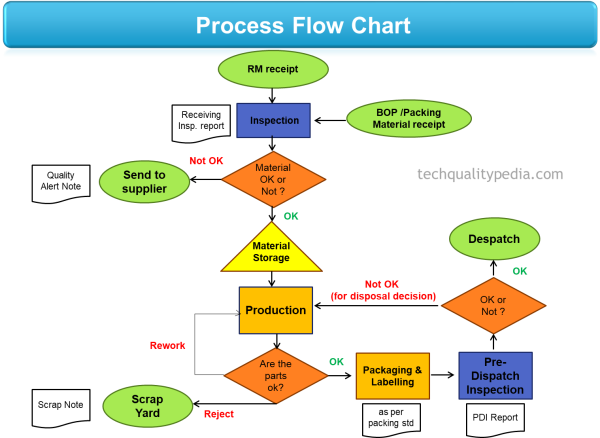
Our production transfer system has been refined through dozens of successful transitions for international clients. The process begins with a comprehensive feasibility analysis that evaluates the technical requirements, material availability, quality parameters, and cost implications of shifting specific products to Bangladesh.
Once products are identified as suitable for transfer, our technical team creates detailed specification packages including patterns, construction guides, material requirements, and quality standards. These documents serve as the production blueprint and ensure consistency regardless of manufacturing location.
Sample production represents the first critical milestone in the transfer process. The Bangladesh team produces samples according to the technical package, which are then evaluated against the China-produced reference samples. This comparison identifies any adjustments needed in materials, construction techniques, or quality control processes.
After sample approval, we proceed with a pilot production run—typically 3,000-5,000 pieces depending on the complexity of the product. This limited run allows for process refinement and quality validation before committing to full-scale production. The pilot products undergo intensive quality assessment, with results guiding any necessary adjustments to production processes.
Full implementation occurs only after pilot production meets all quality benchmarks. At this stage, we establish ongoing monitoring protocols to maintain consistency and address any emerging issues quickly. Throughout this process, our integrated management team provides continuous oversight and communication, ensuring transparency for our clients.
| Transfer Phase | Timeline | Key Activities | Client Involvement |
|---|---|---|---|
| Initial Assessment | 2-3 weeks |
• Product evaluation • Material sourcing verification • Cost analysis • Technical feasibility check |
• Provide product specifications • Share annual volume projections • Define quality requirements |
| Technical Package Transfer | 3-4 weeks |
• Pattern development/transfer • Material specification • Construction guides • Quality standards documentation |
• Review technical package • Approve material substitutions if needed |
| Sample Development | 2-3 weeks |
• First sample production • Sample testing • Comparison with reference samples • Process adjustment |
• Sample approval • Feedback on adjustments |
| Pilot Production | 4-5 weeks |
• Limited production run • Process refinement • Quality verification • Packaging validation |
• Pilot order placement • Product evaluation • Final approval |
| Full Implementation | Ongoing |
• Regular production • Continuous improvement • Performance monitoring • Regular quality audits |
• Regular order placement • Scheduled quality reviews • Feedback integration |
For brands concerned about risk during transition, we offer several approaches to minimize disruption. Many clients opt for a phased transition, beginning with their simplest, highest-volume products while maintaining production of complex items in China. Others prefer parallel production periods where both facilities produce simultaneously until the Bangladesh operation demonstrates consistent quality and delivery.
Communication represents perhaps the most critical element of successful transitions. Our dedicated transition team includes bilingual project managers who coordinate between facilities and maintain clear communication with clients. We've implemented unified digital production management systems that provide real-time visibility into production status, quality metrics, and shipping information regardless of production location.
One advantage of working with HAVING is our dual-facility capability, which allows for flexible production allocation based on changing market conditions. Should tariff situations change or unexpected disruptions occur, we can quickly adjust production between locations to minimize impact—providing a strategic advantage in today's volatile global trade environment.
What Risk Management Strategies Should Be Considered?
Brands often overlook potential disruption risks when concentrating production in a single location. This oversight can leave supply chains vulnerable to geopolitical events, natural disasters, or regulatory changes that may severely impact product availability.
Effective risk management for Bangladesh production includes: 1) Developing robust contingency plans for political instability or natural disasters, 2) Establishing backup sourcing for critical materials, 3) Maintaining safety stock inventories for core products, 4) Creating flexible shipping arrangements through multiple ports, and 5) Implementing regular risk assessments with mitigation strategies.
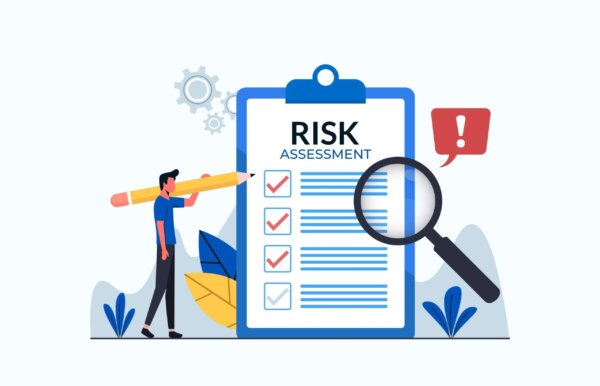
Bangladesh's garment industry has matured significantly over the past decade, but the country still faces certain risk factors that require proactive management. The most significant concerns include political instability during election periods, occasional labor unrest, infrastructure limitations (particularly power supply), and seasonal natural disaster risks in certain regions.
Our risk management approach begins with strategic facility location. Our Bangladesh operation is situated in a modern industrial park with reliable private power generation, advanced fire safety systems, and robust physical security measures. This location was selected specifically to mitigate common infrastructure and safety risks in the region.
For material supply security, we maintain relationships with multiple approved suppliers for each critical material. While our primary sources remain in Bangladesh whenever possible, we've established backup supply channels through our Chinese supply chain when necessary. For specialized materials only available from limited sources, we maintain safety stock inventories sufficient to cover typical production needs during potential disruption periods.
Logistics flexibility represents another key risk management element. We utilize multiple shipping companies and port options to avoid dependency on any single transportation route. Regular contingency drills ensure our team can quickly implement alternative shipping arrangements when necessary, minimizing potential delivery disruptions.
| Risk Category | Specific Risks | Mitigation Strategies |
|---|---|---|
| Risk Category | Specific Risks | Mitigation Strategies |
| Political |
• Election-related disruptions • Policy changes • Labor regulations • Trade status changes |
• Increased inventory before elections • Government relations management • Capacity sharing with China facility • Regular policy monitoring |
| Environmental |
• Monsoon flooding • Cyclones • Infrastructure damage • Power disruptions |
• Elevated facility location • Building reinforcement • Private power generation • Seasonal production planning |
| Supply Chain |
• Material shortages • Supplier disruptions • Import restrictions • Quality inconsistency |
• Multiple approved suppliers • Safety stock for critical materials • Alternative sourcing routes • Regular supplier audits |
| Logistics |
• Port congestion • Shipping delays • Transport costs • Documentation issues |
• Multiple shipping partners • Alternative port options • Advanced logistics planning • Digital customs documentation |
| Operational |
• Labor shortages • Production bottlenecks • Equipment failure • Training gaps |
• Cross-training programs • Preventive maintenance • Performance incentives • Technical staff exchange |
Perhaps our most valuable risk management tool is production flexibility between our China and Bangladesh operations. This dual-facility capability allows us to shift production quickly in response to emerging risks. When major disruptions affect Bangladesh—such as during the 2023 labor demonstrations—we temporarily shifted certain production to China until stability returned, ensuring continuous supply for our clients.
For brands considering Bangladesh production, I recommend several risk management practices based on our experience:
First, begin with a phased approach rather than an immediate complete transition. This allows you to validate the production process and identify potential challenges while maintaining your established supply chain.
Second, consider inventory strategies that account for Bangladesh's longer lead times and potential disruptions. Many clients increase safety stock levels slightly during the initial transition period, gradually optimizing inventory as they gain confidence in the new supply chain.
Third, establish clear communication protocols and escalation procedures with your manufacturer. Rapid information sharing during emerging situations allows for faster problem resolution and contingency implementation.
Finally, regularly review and update your risk assessment as conditions evolve. Bangladesh's business environment continues to improve, but new challenges may emerge that require adjusted strategies. Annual risk reviews with your supplier can identify emerging concerns before they impact production.
By implementing these strategies, brands can confidently leverage Bangladesh's cost advantages while maintaining supply chain security. Our experience demonstrates that with proper risk management, Bangladesh production can be both cost-effective and reliable.
What's The Best Way To Start A Bangladesh Production Partnership?
Many brands feel overwhelmed by the complexity of transitioning production to a new country. Without clear guidance, they may either postpone beneficial changes indefinitely or rush into transitions without proper preparation.
The most effective path to Bangladesh production begins with a pilot project focused on your simplest, highest-volume products. Start with comprehensive supplier evaluation including facility visits, certification verification, and reference checks. Test production quality with development samples before committing to a 3,000-5,000 piece trial order to validate both product quality and delivery reliability.

Over my years guiding clients through this transition, I've found a structured approach yields the best results. The process begins with thorough supplier evaluation, where you should assess potential manufacturing partners against several criteria:
First, verify relevant certifications including quality management (ISO 9001), social compliance (SA8000, WRAP, BSCI), and environmental standards. These certifications provide external validation of facility capabilities and practices.
Second, conduct comprehensive facility visits whenever possible. Virtual tours became common during pandemic restrictions, but in-person visits provide invaluable insights into production capabilities, working conditions, and management systems. During these visits, pay particular attention to quality control processes, employee working conditions, and general facility organization.
Third, request detailed client references, preferably from brands with similar product categories. Speaking with existing clients provides realistic perspectives on a manufacturer's strengths and limitations, particularly regarding communication responsiveness and problem resolution.
Once you've selected a manufacturing partner, begin with product development sampling. This initial testing phase reveals how effectively the facility can execute your specific requirements and highlights any technical limitations requiring attention.
| Pilot Project Stage | Timeline | Key Activities |
|---|---|---|
| Supplier Evaluation | 4-6 weeks |
• Certification verification • Facility assessment • Reference checks • Capacity evaluation • Compliance verification |
| Product Development | 3-4 weeks |
• Technical specification review • Material sourcing • Sample production • Sample testing • Design adjustments |
| Trial Order Production | 5-6 weeks |
• Production setup • Limited run manufacturing • In-process quality checks • Final inspection • Production documentation |
| Performance Evaluation | 2-3 weeks |
• Product quality assessment • Delivery timing analysis • Communication effectiveness • Cost verification • Process improvement identification |
| Strategic Planning | 3-4 weeks |
• Production volume planning • Product category expansion • Long-term partnership agreement • Performance metrics establishment • Continuous improvement processes |
After successful sample approval, proceed with a trial production run. I typically recommend 3,000-5,000 pieces for this initial order—large enough to validate true production capabilities but limited enough to manage risk. This pilot should include the entire production process from material procurement through final shipping to evaluate the complete supply chain.
During trial production, establish clear quality expectations and communication procedures. Regular progress updates, in-process inspections, and comprehensive final quality checks help identify and address any issues early. This intensive monitoring during initial production establishes patterns for ongoing quality management.
Following successful trial production, conduct a thorough performance evaluation. This assessment should examine product quality, delivery reliability, communication effectiveness, and overall value relative to your established suppliers. Use these findings to determine appropriate next steps—whether expanding production volume, adding product categories, or addressing improvement areas before proceeding.
For brands with established China production, I recommend a gradual transition approach that minimizes risk. Begin by maintaining your core China production while shifting selected products to Bangladesh. As confidence in the Bangladesh operation grows, gradually transition additional products based on their complexity and strategic importance.
Throughout this process, maintain open communication with both your existing and new suppliers. Transparency regarding your transition strategy helps both parties provide appropriate support and prevents potential supply disruptions. Many of our clients find that maintaining relationships with both China and Bangladesh facilities provides valuable supply chain flexibility that outweighs the complexity of managing multiple suppliers.
Conclusion
Shifting production from China to Bangladesh offers significant cost advantages through lower labor costs and substantial tariff savings, typically reducing total landed costs by 15-16%. While Bangladesh production requires slightly longer lead times and careful quality management, these challenges can be effectively addressed through proper planning and partnership with experienced manufacturers.
